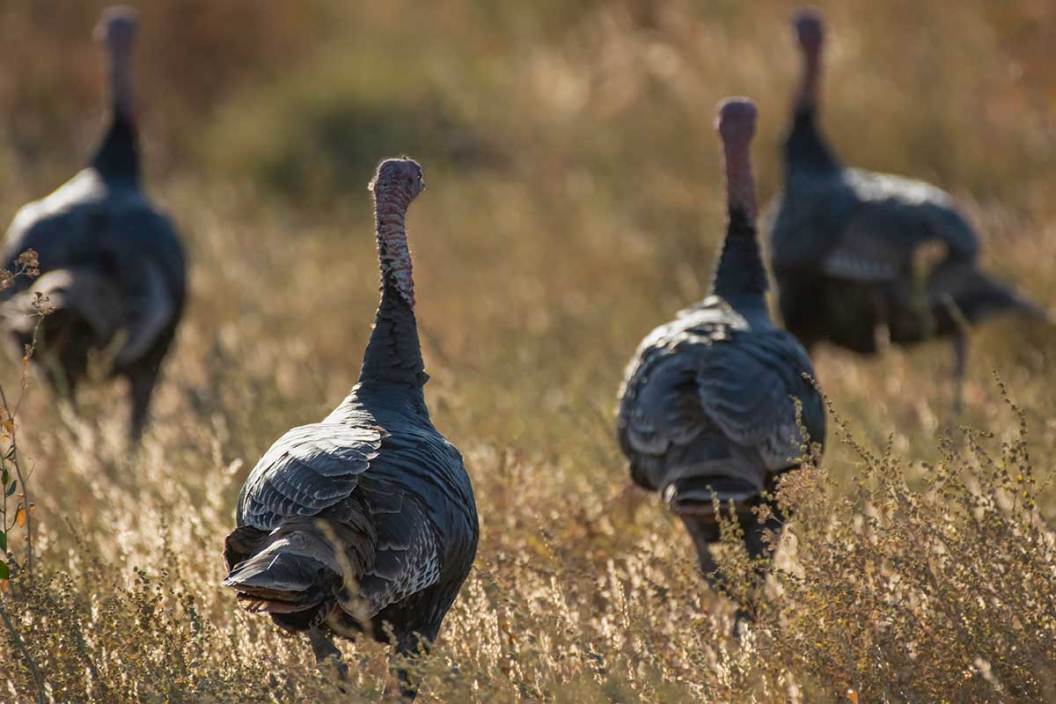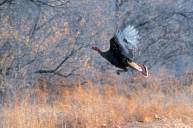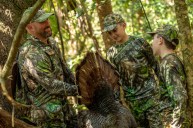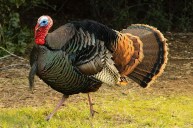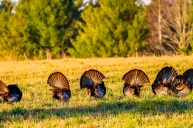Turkey hunting is already challenging. Don't make it any harder on yourself by making beginner mistakes.
Turkey hunting, while incredibly fun and rewarding, proves to be very challenging. Decreasing bird numbers and increasing hunter pressure across the country have only added to the challenge.
Even though the challenge grows, the opportunities to harvest a bird are still great. However, you can't afford to make many mistakes if you are serious about packing a turkey in your vest this season.
Before setting out the fryers and crockpots, you have to be able to bring a bird or two home. If you want to increase your chances this year, don't make the following beginner turkey hunting mistakes, which we're all susceptible to no matter how long we've been at it.
Not Having a Well-Thought-Out Plan
It's time to fess up, because this is a common mistake lots of hunters make. Not having a well-thought-out plan for your morning hunt could significantly decrease your odds of harvesting a bird.
"Have a good plan" sounds like obvious advice, but many hunters' plans don't extend past where they are going to park their vehicle or where they are going to sit and listen for gobbles. There is a lot of variability in turkey hunting, and that's the reason you should have a sound plan heading into your morning.
First you should plan out where you are going to hunt (location, access path, ridgetop, etc.). If you are hunting public land or heavily hunted private land, have a plan A spot, plan B spot, and plan C spot. This should be well thought out. Sometimes you hunt properties where there is only one option and that is fine, you just have to take what you can get. But when you hunt a big property or a property with multiple opportunities, don't let a lack of thinking keep you out of the best spots.
Before going to your listening spot for the morning, you should also have a good idea of how the area you are hunting lays out. While the best way to know this information is to have some boots-on-the-ground experience (previous hunts or pre-season scouting), a brief study session on aerial imagery and topography maps should suffice.
Having this information will save you some time and possibly save your legs. When you locate a bird, the quickest way to him isn't always a straight line. Knowing the ground around you will help you get to more birds quickly and more efficiently.
Calling Too Much
This is probably the mistake most turkey hunters make. While some situations do call for lighting the woods on fire with a variety of turkey sounds, those situations are few and far between. Oftentimes a few soft yelps and clucks is all that is needed to bring that Tom in for a shot.
If you ask an experienced turkey hunter "What leads to more turkey kills, calling or woodsmanship?" I would be surprised if they didn't choose the latter. Sometimes the best choice is to not call at all, but make subtle noises against the forest floor to create the sound of moving birds. A beginning turkey hunter could benefit greatly not just from listening to turkeys but watching them as well.
This isn't a reason to stop practicing your calling by any means. Turkey calling should be viewed as an important tool, but used more sparingly than most think.
Learning how to call appropriately and timely is still incredibly valuable. Being able to hit a perfectly-timed three note yelp and a cluck is artful, and is often all you need to seal the deal.
Abandoning Your Setup too Soon
One of the biggest draws to turkey hunting is its fast-paced nature added to the opportunity to interact with your target vocally. So, oftentimes the last thing a hunter wants to do is sit and wait. Patience is a virtue and is often needed to kill those quiet or stubborn birds.
Most of us have seen this scenario play out: you set up on a bird and call, often with response, for 15 to 20 minutes before suddenly the Tom stops responding. You give it a few more minutes and then make your way down the ridge. You've made it a little ways and then out of nowhere the bird gobbles again, but this time he sounds like he is calling from the very spot you had just sat your keister. Sound familiar?
If you were to have sat still and waited, there is a good chance the bird would have come in while you were there. This is especially true for later in the morning and is a good tactic to try.
The question now is "How long do I give my setup before moving?" There is no perfect answer to that question other than "As long as it takes." All scenarios are different and call for different actions.
Not Learning from Your Failures
Making mistakes is part of hunting and it happens to beginners and seasoned hunters alike. If you aren't trying new things and failing from time to time, are you even hunting?
Failure is not a bad thing; it's part of learning and growth. The most successful, seasoned hunters were once beginners and had to learn from their mistakes as well.
It's not all about becoming a better, more efficient hunter either. It's about learning to enjoy the outdoors and spread that joy with others. Use this turkey season to not only become a better turkey hunter but a better outdoorsman and steward of the land.
READ MORE: WILD TURKEY CONSERVATION HISTORY: HOW GOBBLERS MADE THEIR HISTORIC COMEBACK
